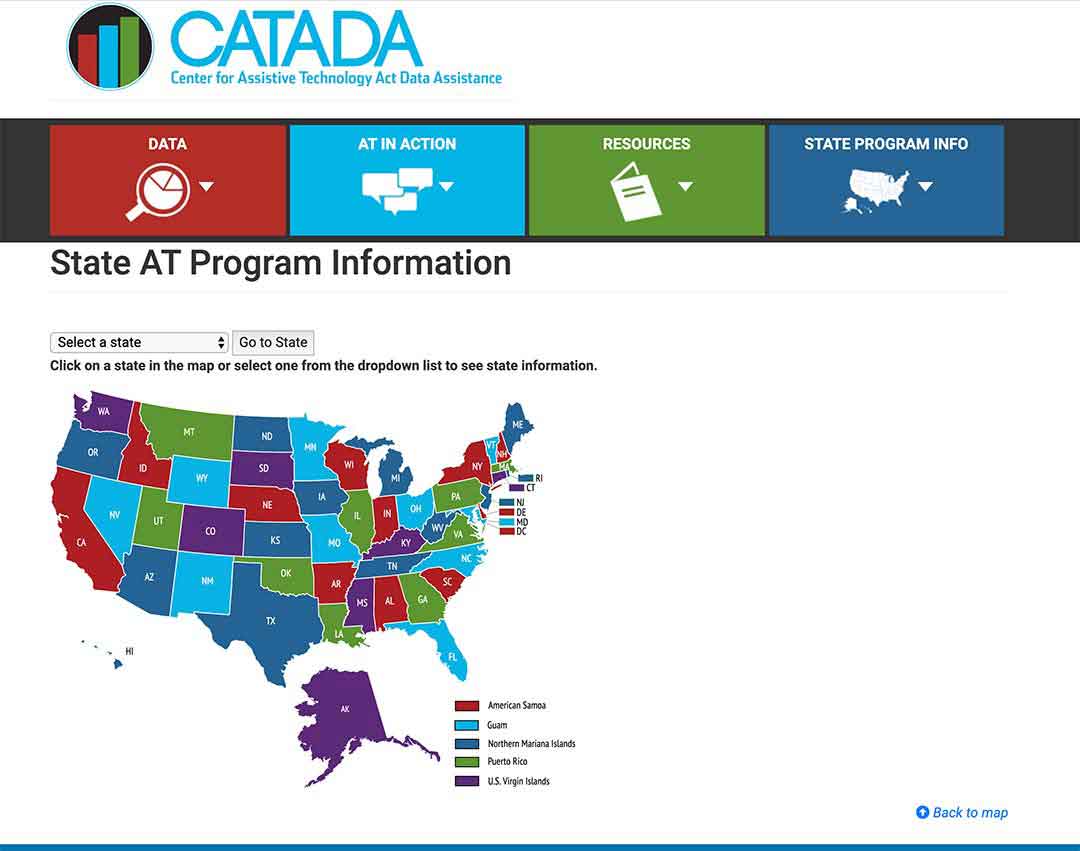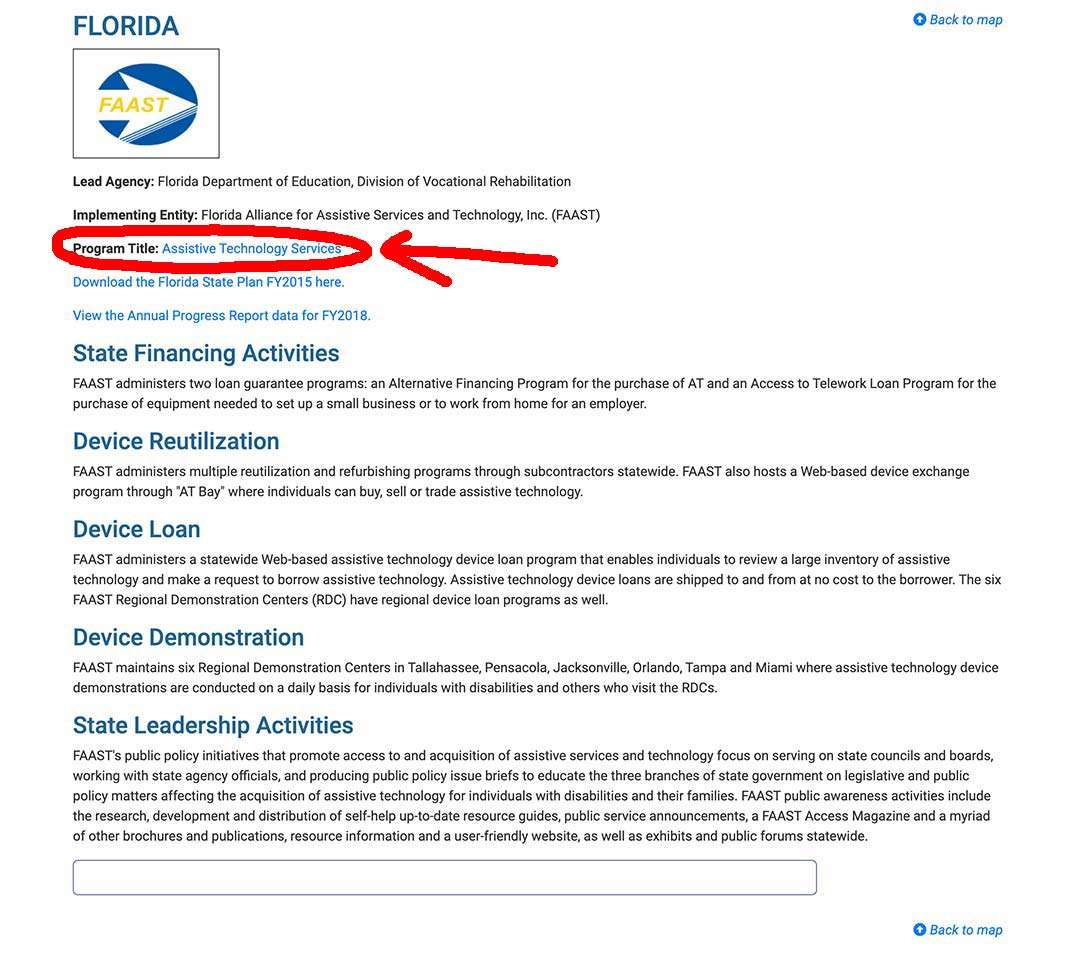I would think the cane is possibly the easiest, and most the commonly used aid by both the elderly, and anyone has had issues with their legs and ankles. Now, although they are not usually what I would call expensive, why pay the full whack if you have insurance ?
Walking canes are covered by Original Medicare for use in the home, if you have a signed prescription from a Medicare-enrolled physician certifying it is “medically necessary”, and if it is acquired from a Medicare-approved supplier.
Medicare Part B will cover 80% of the Medicare-approved price, and you will have to pay your 20% co-insurance, and deductible if it applies.
Contents Overview & Quicklinks
Medicare’s coverage guidelines for walking canes ?
Does Medicare cover quad canes ?
Where can I fill a prescription for a cane ?
Does Medicare cover upright walkers ?
How often are walking canes, or walkers, covered by Medicare ?
Does Medicare part B cover walking boots ?
Does Medicare cover knee walkers ?
Medicare-approved walker supplier?
Does Medicare cover stationary bikes ?
What equipment does Medicare cover ?
List of durable medical equipment which is typically covered by Medicare
List of durable medical equipment not covered by Medicare
Medicare-approved equipment supplier near me ?
How do you qualify for Medicare covered DME ?
How do you, or your loved one, proceed once you have the signed prescription for your DME ? How to get the best possible coverage and not over-pay ?
So, what are you risking if you or your loved one get it wrong ?
Do Medicare Advantage Plans cover walking canes ?
Free help with understanding Medicare
Does Medicaid cover walking canes ?
How to find the HCBS programs, waivers and 1915 waivers in your state ?
How to get DME with Medicaid and state waivers, and HCBS programs ?
If you don’t quite qualify for Medicaid
Other funding sources for the elderly
- Free walking canes
- Free walking canes from State Assistive Technology Programs
- Free walking canes from Medical Loan Closets
- Free walking canes on Craigslist
- Free walking canes on UsedHME.com
- Free walking canes from Freecycle.org
- Free walking canes from Nextdoor.com
- Free walking canes on Facebook Selling Groups and Marketplace
Medicare’s coverage guidelines for walking canes
Here are Medicare’s guidelines for determining if an individual is eligible for a walking cane, or crutches, so you can get the idea.
The information is taken from CMS.gov (Center for Medicare and Medicaid Services) and can be found here.
“1.The beneficiary has a mobility limitation that significantly impairs his/her ability to participate in one or more mobility-related activities of daily living (MRADL) in the home.
The MRADLs to be considered in this and all other statements in this policy are toileting, feeding, dressing, grooming, and bathing performed in customary locations in the home.
A mobility limitation is one that:
a.Prevents the beneficiary from accomplishing the MRADL entirely, or,
b.Places the beneficiary at reasonably determined heightened risk of morbidity or mortality secondary to the attempts to perform an MRADL; or,
c.Prevents the beneficiary from completing the MRADL within a reasonable time frame;
And,
2.The beneficiary is able to safely use the cane or crutch; and,
3.The functional mobility deficit can be sufficiently resolved by use of a cane or crutch.
If all of the criteria are not met, the cane or crutch will be denied as not reasonable and necessary.”
Does Medicare cover quad canes ?
Yes, Medicare Part B does cover quad canes when they are prescribed as “medically necessary” by a Medicare-enrolled physician.
Medicare Part B will cover 80% of the Medicare-approved price, and you will have to pay your 20% co-insurance, and deductible if it applies.
Where can I fill a prescription for a cane ?
To get a walking cane covered by Medicare Part B, you have to get a Medicare-enrolled physician to prescribe it as “medically necessary”, and of course you have to be enrolled in Medicare yourself.
Does Medicare cover walkers ?
Medicare Part B does cover walkers for use in the home, if they have been prescribed by a Medicare-enrolled physician as “medically necessary” in accordance with the Medicare guidelines.
Medicare will cover 80% of the Medicare-approved price, and the beneficiary covers their 20% co-insurance, and their annual deductible if they haven’t already done so.
Walkers are very much one of the commonly used pieces of equipment by the elderly and a very necessary to many.
My Mom has used one ever since her hip replacement 4 years, as her balance is sometimes a little off.
At 92 Mom can be rather stiff when she gets up at night, and the frame by the bed just helps her to have something to hold onto as she straightens up into a standing position.
Walkers come in quite a few varieties, from one without wheels to rollators.
Does Medicare cover upright walkers ?
Medicare Part B does cover upright walkers as durable medical equipment for use in the home, if they have been prescribed by a Medicare-enrolled physician as “medically necessary”.
Medicare Part B will cover 80% of the Medicare-approved price, and you will have to pay your 20% co-insurance, and deductible if it applies.
How often are walking canes, or walkers, covered by Medicare ?
Typically, Medicare Part B will replace any equipment that it covers, and which is worn out, once every five years from the date that it was received.
So you can replace your walker with Medicare Part B every five years, unless it has been lost, stolen or damaged beyond repair.
Equipment which has been covered by Medicare which is lost, stolen or damaged beyond repair, may be replaced – Medicare will of course require proof of the initial coverage and purchase with them.
Source: Medicare coverage of Durable Medical Equipment and Other Devices, CENTERS for MEDICARE & MEDICAID SERVICES. You can read the whole document here.
The passage is on Page 13 of the PDF. You can also download the document from the link above.
Does Medicare Part B cover walking boots ?
If you have a prescription from a Medicare-enrolled physician which states that it is “medically necessary”, Medicare will cover a walking boot.
Medicare Part B will cover 80% of the Medicare-approved price, and you will have to pay your 20% co-insurance, and deductible if it applies.
Walking boots, or ankle-foot orthosis, are orthopedic devices used for the stabilization of the foot and ankle used for broken bones, severe sprains, tendon and ligament tears, surgeries and orthopedic conditions.
As I said, Medicare Part B will cover “walking boots” under the benefit for Orthotics or Braces, but there are certain conditions to this, and they will only cover them if –
- the “walking boot” is rigid, or semi-rigid
- the walking boots are being used to immobilize the ankle/foot following orthopedic surgery or for an orthopedic condition
If the walking boots are being used to relieve pressure, especially on the sole of the foot, or are for foot ulcers, the walking boot is not covered. Medicare has coverage for Therapeutic shoes for those with diabetes.
Does Medicare cover Knee walkers ?
Despite the popularity of knee walkers, or knee scooters, as they are also commonly called, these items are not covered by Medicare Part B.
The knee walkers are a popular piece of equipment for those who have just had an ankle surgery and as it allows you to completely take the weight off the ankle, but Medicare considers it to be more of a comfort item, and it doesn’t fill their criteria for being covered due to this.
I guess Medicare feels a pair of crutches will do the job just as well !
If you don’t have any kind of other insurance to cover one, it is still a lot cheaper to rent one as compared to buying one.
Medicare-approved walker supplier ?
To find a Medicare-approved supplier go to their locator tool. You can now actually select walker and enter your zip code.
Here is the link to the DME supplier locator tool – https://www.medicare.gov/medical-equipment-suppliers/
Does Medicare cover stationary bikes ?
Medicare Part B does not typically cover exercise equipment, as it is not seen as “primarily medical in nature”.
Medicare Advantage Plans do sometimes cover gym memberships where you will be able to use a stationary bike, and now have new benefits for individuals with chronic conditions.
You will have to see what Advantage Plans are available in your area and what benefits they are offering.
What equipment does Medicare cover ?
Medicare Part B covers certain durable medical equipment for use in the home, which has been prescribed by a Medicare-enrolled physician as “medically necessary” in accordance with the Medicare guidelines.
Durable medical equipment is equipment which is durable, and not disposable.
Medicare Part B typically covers items of durable medical equipment such as wheelchairs, walkers, bedside commodes, and hospital beds – all are covered when “medically necessary”.
For Medicare Part B to cover an item of durable medical equipment, it has to be seen to fulfill the following criteria –
- the item must be able to withstand repeated use over a sustained period of time – durable
- the item must be used for a medical reason only – not for comfort
- it is an item that is of use to someone who is actually sick, and of little use to a person who is well
- it is an item which is primarily for use in the home
- the item must be expected to last at least 3 years
I have compiled a long list of items that Medicare classifies as Durable Medical Equipment and which is typically covered for the home.
List of durable medical equipment typically covered by Medicare
If you don’t find the equipment you are looking for in my list of Medicare covered DME’s below, you can use this link to Medicare.gov
Air-Fluidized Bed
Alternating Pressure Pads and Mattresses
Audible/visible Signal Pacemaker Monitor
Pressure reducing beds, mattresses, and mattress overlays used to prevent bed sores
Bead Bed
Bed Side Rails
Bed Trapeze – covered if your loved one is confined to their bed and needs one to change position
Blood sugar monitors
Blood sugar (glucose) test strips
Canes (however, white canes for the blind aren’t covered)
Commode chairs
Continuous passive motion (CPM) machines
Continuous Positive Pressure Airway Devices, Accessories and Therapy
Crutches
Cushion Lift Power Seat
Defibrillators
Diabetic Strips
Digital Electronic Pacemaker
Electric Hospital beds
Gel Flotation Pads and Mattresses
Glucose Control Solutions
Heat Lamps
Hospital beds
Hydraulic Lift
Infusion pumps and supplies (when necessary to administer certain drugs)
IPPB Machines
Iron Lung
Lymphedema Pumps
Manual wheelchairs and power mobility devices (power wheelchairs or scooters needed for use inside the home)
Mattress
Medical Oxygen
Mobile Geriatric Chair
Motorized Wheelchairs
Muscle Stimulators
Nebulizers and some nebulizer medications (if reasonable and necessary)
Oxygen equipment and accessories
Patient lifts (a medical device used to lift you from a bed or wheelchair)
Oxygen Tents
Patient Lifts
Percussors
Postural Drainage Boards
Quad-Canes
Respirators
Rolling Chairs
Safety Roller
Seat Lift
Self-Contained Pacemaker Monitor
Sleep apnea and Continuous Positive Airway Pressure (CPAP) devices and accessories
Sitz Bath
Steam Packs
Suction pumps
Traction equipment
Ultraviolet Cabinet
Urinals (autoclavable hospital type)
Vaporizers
Ventilators
Walkers
Whirlpool Bath Equipment – if your loved one is home bound and the pool is medically needed. If your loved one isn’t home bound, Medicare will cover the cost of treatments in a hospital.
Prosthetic and Orthotic Items
Orthopedic shoes only when they’re a necessary part of a leg brace
Arm, leg, back, and neck braces (orthotics), as long as you go to a supplier that’s enrolled in Medicare
Artificial limbs and eyes
Breast prostheses (including a surgical bra) after a mastectomy
Ostomy bags and certain related supplies
Urological supplies
Therapeutic shoes or inserts for people with diabetes who have severe diabetic foot disease.
List of durable equipment not typically covered by Medicare
Adult Diapers
Air Cleaners
Air Conditioners
Alcohol Swabs
Augmentative Communication Device
Bathroom Aids
Bathtub Lifts
Bathtub Seats
Bed Bath
Bed Boards
Bed Exit Alarms
Bed Sensor Pads
Bed Lifter
Beds – Lounge
Bed Wedges
Blood Glucose Analyzers
Braille Teaching Texts
Caregiver Paging Systems
Catheters – except those which are used for permanent medical conditions where the catheter is considered as a prosthetic
Chair Exit Alarms
Chair Sensor Pads
Communicator
Contact Lenses – Medicare helps pay for corrective lenses if you have cataract surgery to implant an intraocular lens
Dehumidifiers
Dentures
Diathermy Machines
Disposable Bed Protectors
Disposable Sheets
Door Exit Alarms
Easygrip Scissors
Elastic Stockings
Electrical Wound Stimulation
Electrostatic Machines
Elevators
Emesis Basins
Esophageal Dilators
Exercise Machines
Exit Alarm Mat
Eye Glasses – Medicare helps pay for corrective lenses if you have cataract surgery to implant an intraocular lens.
Fall Alarms
Fans
Fabric Supports
Fomentation Device
Grab Bars
Grabbers
Gauze
Hearing Aids
Heat and Massage Foam Cushion Pad
Heating and Cooling Plants
Home Modifications
Humidifiers – not room humidifiers
Incontinence Pads
Injectors (hypodermic jet pressure powered devices for Insulin injection)
Irrigating Kits
Insulin Pens
Massage Equipment
Motion Sensors
Motion Sensor Exit Systems with Pagers
Needles
Oscillating Beds
Over bed Tables
Paraffin Bath Units (if not Portable)
Parallel Bars
Portable Room Heaters
Portable Whirlpool Pumps
Preset Portable Oxygen Units
Pressure Leotards
Pressure Stockings
Pulse Tachometer
Pull String Alarms
Raised Toilet Seats
Ramps
Reading Machines
Reflectance Colorimeters
Sauna Baths
Special TV Close Caption
Speech Teaching Machines
Stair Lifts
Standing Table
Support Hose
Surgical Face Masks
Surgical Leggings
Syringes
Telephone Alert Systems
Television Assistive Listening Devices
Telephone Arms
Toilet Seats
Treadmill Exercisers
Walk in Bathtubs
Wheelchair Lifts
Whirlpool Pumps
White Canes
Wigs
Medicare-approved equipment supplier near me ?
To find a local Medicare-approved medical equipment supplier near you, check this link at Medicare.gov
How do you qualify for DME with Medicare Part B ?
For Medicare Part B to cover durable medical equipment “for use in the home” you –
- have to be enrolled in Medicare Part B
- have your Medicare-enrolled doctor give you a signed prescription which states that the equipment is a “medically necessary” by the Medicare criteria
- have to acquire the equipment through a Medicare-enrolled “participating” supplier
For Medicare coverage, “living at home” is defined as –
- living in your own home
- living in the family home
- living in the community, such as assisted living
With regard to nursing homes and hospitals, they are covered under Medicare Part A – hospital treatment. As such, they cannot qualify as a home for Medicare Part B.
The coverage for DME’s is different for skilled nursing facilities, and they are provided for up to 100 days by the nursing facility itself.
How do you, or your loved one, proceed once you have the signed prescription for your DME ?
Once you have your order/prescription, it’s time for you or your loved one to go to a Medicare-enrolled DME supplier, and to choose your walking cane.
The range of canes which Medicare covers will be a somewhat limited one, as they only cover the most basic models of each type of equipment.
You will also have to fill out more forms with the supplier to prove you have the coverage and for them to get paid by Medicare.
As long as you have the prescription from a Medicare-enrolled doctor, then Medicare part B will cover 80% of the Medicare-approved price for the walking cane with the Medicare enrolled-supplier
It is left for you or your loved one to pay the Medicare 20% co-payment of the Medicare-approved price of the walking cane, as long as you used a Medicare-enrolled “participating” supplier who accepts assignment.
If you didn’t, you may owe more ! I will elaborate in a moment !
You or your loved one will also need to pay your Medicare deductible, if it hasn’t already been met for the year in question.
Medicare may purchase or rent DME’s
Typically, Medicare rents equipment from their DME Medicare-enrolled suppliers on a monthly basis, except for the least important items.
As long as the DME is rented from a Medicare-enrolled “participating” supplier who accepts assignment there is only a monthly co-payment of 20% of the Medicare-approved rental price, and of course the deductible if it has not been met.
How to get the best possible coverage and not over-pay ?
To get the best coverage for your DME with Medicare, you must follow all the steps of the process correctly.
It is vital that you use a Medicare enrolled “participating” supplier who accepts “assignment” if you are to avoid paying any surplus.
This ensures the DME is bought at the Medicare-approved price, and that the 20% co-payment and your deductible are all you will pay.
So, what are you risking if you or your loved one get it wrong ?
There are two types of Medicare approved suppliers –
- Medicare Suppliers
- Medicare “Participating” Suppliers
Medicare “Participating” Suppliers, have an arrangement with Medicare whereby the Medicare “Participating” Suppliers will accept what is called “assignment” which means that they cannot charge more than the Medicare-approved price for DME’s.
Suppliers who are not “Participating” can charge what they like for equipment. Medicare will only pay the Medicare-approved price, which leaves you, or your loved one, to make up the shortfall, as well as the co-payment and annual deductible (if it applies).
The shortfall can be whatever extra amount the supplier has decided to charge above the Medicare -approved price for your item.
What do Medicare Advantage Plans cover in all of this ?
If you have a Medicare Advantage Plan, you are covered for everything that Medicare Parts A and B cover, and often a little more.
As regards the process you will need to contact your provider, as they will have their rules, and also their own network of doctors and DME suppliers whom you must use if you are to be covered.
Free one-on-one help with understanding Medicare
SHIP – State Health Insurance Assistance Programs –
You can get free guidance about Medicare, Medicaid and Medigap from your state program.
I have a short article explaining how to find your local SHIP and you can find that here – “Free Help Understanding Medicare And Medicaid ? Here’s Where You Get It”.
Does Medicaid cover walking canes ?
Medicaid does not work in the same way with its funding as Medicare – Medicaid is funded both on a federal level and at the individual state level.
Each state, as long as it keeps within the basic Medicaid guidelines, can have a lot of latitude in what it can do with the different funding.
A state can have multiple programs, both state and Medicaid, for working with people in their homes and in the community, trying to help to maintain their independence.
What is considered Durable Medical Equipment will vary widely, not only from state to state, but also on differing programs and waivers within the different states.
Medicaid and state programs for care services in the home
The programs which are designed to help individuals maintain their independence in their homes, and in the community, are called “Home and Community Based Services” (HCBS), “Waivers” or “1915 Waivers”.
These programs are primarily for low income families, disabled individuals and the elderly.
To find out if you or your loved one are eligible, you will contact your State Medicaid Office.
Your local Area Agencies on Aging should be able to help you find out as well.
To get more technical information on the HCBS programs or waivers, you can follow the link below to medicaid.gov –
https://www.medicaid.gov/medicaid/hcbs/authorities/index.html
The programs and waivers will pay for “home medical equipment”, and will often cover 100% of the cost in order to help the elderly, disabled and low income families in their homes.
The term “home”, for the beneficiary, can cover any of the following situations –
- their own home
- their family home
- a group home
- an assisted living facility
- a custodial care facility
Certain programs and waivers may have greater breadth in what they are willing to consider as DME for home use
HCBS programs and waivers can sometimes operate a system “Consumer Direction” or “Self Direction”
With Consumer Direction or Self Direction, the program participant is given a budget to spend across all their needs. To help them manage this budget, they are appointed a financial advisor.
The advisor is going to help the person manage the money to cover what they need to maintain their independence in their home.
Should the participant require certain medical equipment, and it falls within their allotted budget, and it is really vital to their being able to sustain their independence, then they will very often be allowed this equipment.
This equipment can extend to all sorts of bathroom safety equipment and other devices not available on Medicare as a DME.
To find out more about Medicaid Self Direction, click here.
Returning the elderly back into their homes
Money follows the person – is a Medicaid based program whose primary objective is to help elderly adults make the transition from nursing facilities back into their own homes – in this case assisted living can be considered as their own home.
Medical equipment, which is necessary for the participant to be able to make the move, is purchased by the program.
What may be considered a DME here, can be very different from that which is allowed with Medicare, and can go as far as remodeling parts of the home to make things safer or simply possible.
How to find the HCBS programs, waivers and 1915 waivers in your state
If you wish to see the HCBS Waivers, 1915 Waivers, HCBS Programs and the Money Follows The Person Programs for seniors which are available in your state, I have an article with a list of what is available in each state, along with links to the different program websites. The article also lists of all the PACE Programs – Programs of All-inclusive Care for the Elderly -for care in the home, by state – “Medicaid Home and Community Based Services Waivers and Programs For Seniors Listed By State”.
How do you get DME with Medicaid and state waivers, and HCBS programs ?
Step 1
– the doctor, or therapist, has to provide a medical justification letter, which states that the equipment is medically necessary
Step 2
– you or your loved one have to find a DME supplier who is Medicaid-approved, and to give to them the medical justification letter
Step 3
– the DME supplier then fills out a Prior Approval Application for Medicaid
Step 4
– the document is then sent to the Medicaid State Office for approval or denial
Step 5
– if you or your loved one are unsuccessful you will be notified as to the reasons why, and given advice on how to appeal the decision
Step 6
– if approved, you or your loved one will receive the DME
If you don’t quite qualify for Medicaid
Spend Down
Spend Down programs, or “spending down” is a method devised by Medicaid to help to reduce a person’s income, or asset + income level, so that they may become eligible for Medicaid coverage.
There are two types of Spend Down –
- Asset Spend Down
- Income Spend Down
If you want to know more about Spend Down, I wrote a post about who can qualify for Spend Down, the which expenses are deductible and how to find out if you qualify – “What is Spend Down ?”
To find your State Medicaid State Agency
You can also just contact your state Medicaid Agency, which you can do here.
Step 1 – Once you have clicked the link to Medicaid.gov, just look over to the right on the website page, and you will see the section I have outlined in the image below.

Step 2 – select your state and click on the button they have marked “GO” – it will take you to your State Medicaid Agency, and you will be able to get all the contact info and make calls or do emails to get all the help you need.

Other funding sources for the elderly
Here are a couple of other sources of funding available to the elderly for walking canes and other DME.
State Financial Assistance Programs
These are non-Medicaid programs, which exist to lower the number of elderly persons entering Medicaid run nursing homes.
The programs run on a state-by-state basis and are designed to help the elderly to remain living in their homes – not all states have them.
The programs will pay for home modifications and also purchase necessary equipment, which includes bathroom safety equipment and walk in tubs and showers.
Eligibility for the programs differs with each one, but generally they are for the elderly and the disabled.
Free walking canes
There are quite a number of ways for the elderly to get free durable medical equipment, and with a little searching it is possible to find items.
Do be aware though that if you use some of the online services available, most of these are not going to guarantee the quality of the equipment, unless they say that they have refurbished it, and that it is safe.
Typically, there will be a disclaimer accepting no responsibility for any accidents which may arise from the use of the free item.
Here’s a list of the places that you can find free durable medical equipment –
- State Assistive Technology Programs
- Community Medical Equipment Loan Closets
- Craigslist – online listing near you
- UsedHME.com – Used Home medical equipment
- Freecycle.org
- Nextdoor.com – an online listing of free items in your neighborhood
- Facebook Groups and Facebook Marketplace listings of items in your area which are offered for free
- Buy Nothing Groups
Free walking canes on Assistive Technology Programs
A national grant is given to all states to be used in “Assistive Technology Programs”. The “programs” are meant to increase access to assistive devices in the home for those who need them, in particular the disabled and the elderly.
The terms “Assistive Technology” and “DME” are pretty much interchangeable, and cover all manner of equipment and devices which can help in the home.
Seniors frequently obtain free, or very cheap, Durable Medical Equipment and Assistive Technology Devices from their state AT Programs.
State AT programs tend, in general, to work through networks of nonprofit organizations and charities, to make new, and refurbished equipment available to those in need.
So take a look at your state Assistive Technology Program
Finding your state AT Program
To find your state AT project, click here.
Step 1/
Select your state from the map or from the drop-down menu.
Then click on “Go to state”
– I chose Florida for this example

Step 2/
Look “Program Title” and click on it – In this example I outlined it in red.

Step 3/
This takes you to your state AT Program website where you can sign up, or use their contact info to get in touch and find out what they offer to help the elderly.

Free walking canes from Medical Equipment Loan Closets
Find out if your local community have medical equipment loan closets run by community volunteers, where seniors can borrow, and even be given DME for free.
The equipment available varies from group to group of course, but you can find large items like hospital beds, or smaller equipment such as walkers, and usually all for free.
Free walking canes on Craigslist
The online classified listing website Craigslist has durable medical equipment which private individuals are offering for free.
You can do a local search very easily, and it can be restricted to your town, or even to a neighborhood in a larger city.
After you have selected the area in which you are conducting your search, you can find in the sales category menu, a category named “free stuff”, which you select, and where you will find free equipment.
Free walking canes on UsedHME.com
This website is specifically for those who wish to sell, buy or donate used home medical equipment.
On the site, you can set how far you are willing to travel from your home, and then search for free medical equipment within that area.
If you find an item you want, you will get the contact details of the person offering the equipment, and so that you can organize with them how you will pick it up.
Free walking canes from Freecycle.org
Freecycle is an organization of groups of people all over the world, who offer items for free to others in their group.
On the Freecycle website, you can search for groups in your area, and if there are groups that you are interested in, you can look through what items are offered.
If you find something you want, you ask to join the relevant group, and then contact the person offering the item you are interested in.
Everything is on this site is free.
Free walking canes from Nextdoor.com
This is another site of neighborhood groups where you can buy, sell, donate and get items for free.
Free walking canes on Facebook Selling Groups and Marketplace
Facebook has a lot of what are called “selling groups” where people buy and sell products
I actually saw a hospital bed being offered for free last year on one group.
If you have a Facebook account, you can join groups that interest you – you select the distance from your home within which you want to search.
Facebook will then give you a list of the groups, and you can ask to join those you choose to – you just ask to join the group, and normally the group admin will admit you to the group.
You will then see postings of all the items in the groups, of which many offered for free.
There is a second online market you can join on Facebook, the Facebook Marketplace, which is separate from Selling Groups, and is another platform where people on Facebook can buy and sell items, as well as donating and finding items for free.
You just need to browse Marketplace to see what there is.
Marketplace is sometimes not available to you when you first join Facebook, and you may have to wait several months for it to appear in your Facebook dashboard.
The Selling Groups, on the other hand, are available to join straight away.
Where to ask about free walking canes in your neighborhood
You could try some of the following locations in your neighborhood –
- Your local Area Agency on Aging
- Lions Clubs
- Rotary Clubs
- Local church communities
Area Agencies on Aging
Area Agencies on Aging help adults over the age of 60, their families and their caregivers to find the information, assistance and services in the community.
Their ultimate goal is to help the elderly to maintain their independence and to remain living in their own homes.
Your local Area Agency on Aging is an excellent place to start asking questions about free medical equipment, loan closets for DME, or thrift stores selling gently used equipment.
The National Association of Area Agencies on Aging has a locator tool, which can be found here.
Lions Clubs
The Lions run some community loan closets for home medical equipment for seniors.
You can find a club near you, and ask if they have, or know of, any loan closets in your area.
I have written an illustrated guide showing how to very quickly find a Lions Club near you, and you can find that here.
Rotary Clubs
Just like the Lions organization, Rotary Clubs do a huge amount of charity work, and run many programs through the organization’s clubs.
Si if you are having trouble finding loan closets in your area, it may be a good idea to locate a club near you and ask if they know of clubs, or other organizations, in your area that have free medical equipment loan closets.
You can use their club locator tool to find a club near you.
I have written another illustrated guide on locating a Rotary Club near you, that you can read here – it’s a very quick and easy read.
Summary
You can get walking canes and other aids such as crutches, walkers, rollators, and walking boots covered by Original Medicare Part for use in the home, as long as they are “medically necessary”.
So you don’t pay any more than your co-pay and your deductible, you really have to follow the right procedure.
Don’t forget, before purchasing the durable medical equipment, to ask the supplier if they are a Participating Supplier who accepts “assignment”.
Medicare will always buy the most basic version of any item of durable medical equipment, and will make the buyer pay for any upgrades if they are allowed on that item.
Medicaid and state programs in many cases accept a broader range of equipment as DME and will often pay 100% of the cost, if you are eligible.
I’m Gareth, the author and owner of Looking After Mom and Dad.com
I have been a caregiver for over 10 yrs and share all my tips here.

